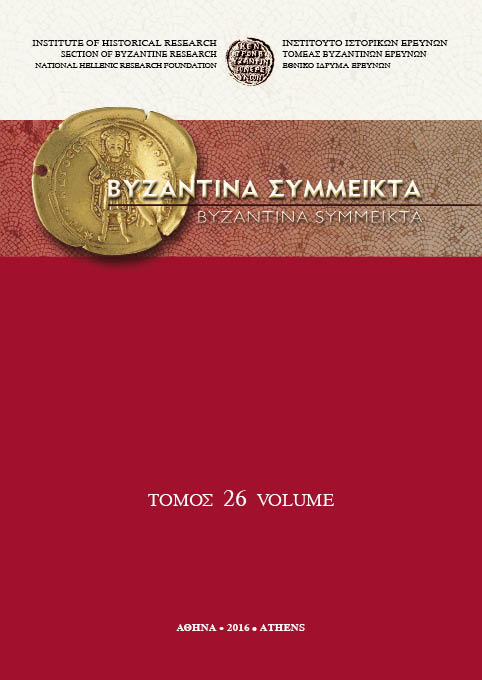Le penchant politique de Basile Lakapènos pour l’Athos et le rétablissement des relations de Basile II avec le monastère de Stoudios en 985/986
Abstract
The Political Inclination of Basil Lakapenos towards Athos and the Reconnection of Basil II with the Monastery of Stoudios in 985/986
This study attempts to show that the only time that Basil II was unable to express his commitment to the Monastery of Stoudios was the period of omnipotence of Basil Lakapenos who, having broken with Antony III and the Stoudites, made clear his own preference for the monastic community of Mount Athos. After the expulsion of the domineering Lakapenos, Basil II resumed his habitual annual visits to the Monastery of Studios, which his ancestors had honored. His reconnection with the monastery in 985/986 seemed to be the only action with which the emperor could express his detachment from the options of Basil Lakapenos in ecclesiastical matters. Basil II had a long road ahead to definitively resolve issues having to do with his relationship to the senior clergy.
Article Details
- How to Cite
-
ΒΛΥΣΙΔΟΥ Β. (2016). Le penchant politique de Basile Lakapènos pour l’Athos et le rétablissement des relations de Basile II avec le monastère de Stoudios en 985/986. Byzantina Symmeikta, 26(2), 127–139. https://doi.org/10.12681/byzsym.8882
- Issue
- BYZANTINA SYMMEIKTA 26
- Section
- Articles

This work is licensed under a Creative Commons Attribution-NonCommercial-ShareAlike 4.0 International License.
Copyright: The copyright for articles in this journal is retained by the author(s), with first publication rights granted to the journal. By virtue of their appearance in this open access journal, articles are free to use (with the exception of the non-granted right to make derivative works) with proper attribution for non-commercial uses (licence Creative Commons 4.0). NHRF retains the worldwide right to reproduce, display, distribute, and use articles published in BYZANTINA SYMMEIKTA in all formats and media, either separately or as part of collective works for the full term of copyright. This includes but is not limited to the right to publish articles in an issue of the Journal, copy and distribute individual reprints of the articles, authorize reproduction of articles in their entirety in another NHRF publication, and authorize reproduction and distribution of articles or abstracts thereof by means of computerized retrieval systems.









